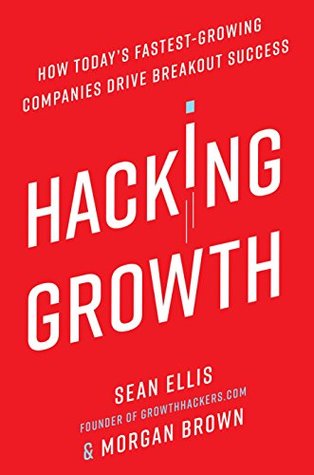More on this book
Community
Kindle Notes & Highlights
by
Sean Ellis
Read between
May 1 - May 30, 2022
Contrast this to the masterfully appealing experience Airbnb has created for new invitees. First, the invite includes the name and a picture of the person who invited you, along with a personalized message about the incentive, which at the time of this writing was: “Your friend Morgan gave you $25 off your first trip on Airbnb, the best way to travel. Be sure to say thanks!” The call to action is also prominent and simple—a large box labeled “Claim Your Credit.”
The more visitors who experience what makes your product a must-have, the more of them will stick with you.
As you might recall from Chapter Three, the team has determined that the aha experience comes when shoppers realize they can use the app to easily and quickly order their groceries on the fly, in those in-between moments when they’ve got a bit of spare time, or as they randomly think of or remember an item they need as they are running around and going about their daily lives. The next thing the team needs to do is list all of the steps that new users must take in order to have this experience: they need to download the app; find items they want; add them to their carts; create an account by
...more
Even if you think you understand what the barriers to activation are, the true story can be quite surprising.
By deeply analyzing our user data, looking for differences in the experiences of people who used Qualaroo for free and then purchased versus those who tried the product but ultimately didn’t buy, we learned that most people who ultimately purchased had run trial surveys that elicited at least 50 responses. Knowing that the aha moment for the product was getting actionable user feedback from surveys, we determined that 50 survey responses was the tipping point after which the value of surveys became clear. So to get more users to experience the aha moment, we tried many experiments aimed at
...more
“What’s the one thing that nearly stopped you from completing your order?” We’ve found this “one thing” question elicits a high number of responses, and ones that are very eye-opening. Of course the questions you ask will depend upon the drop-off point you’re asking about. Others might be: • What were you hoping to find on this page? • Does this page contain the information you were looking for? • What did you come to our site/app to do today? • What convinced you to complete your purchase today? • On this screen, it seems like I should be able to… • Was there anything about the checkout
...more
To get to the bottom of the flagging activation rates, the Sidekick team first dug into the data to find the differences between users who tried the product and stuck with it, and those who installed Sidekick and disappeared.
The team tried adding various types of explanation on the landing page visitors arrived at once they had installed the app, and experimented with videos that demonstrated how to use the product and also tried showing a sample of the kind of report users receive about the activity seen on their sent emails. But to their surprise, every one of those tests failed to improve adoption. The team ultimately ran 11 separate experiments, and still, nothing took. At this point the bewildered growth team decided they needed to step back and take another dive into the data. Maybe more education wasn’t the
...more
The key takeaway here is that you cannot know ahead of time which experiments are going to be most effective. The best you can do is stay nimble and data-driven: continuously tailoring experiments according to the discoveries you make and then being ready to quickly adjust and try other approaches if experiments aren’t working as hypothesized.
To recap, those steps are: map all of the steps that get users to the aha moment; create a funnel report that profiles the conversion rates for each of the steps and segments users by the channel through which they arrive; and conduct surveys and interviews both of users who progressed through each step where you’re seeing high drop-offs, and those who left at that point to understand the causes of drop-off. You can then use this information to create new, highly targeted, and high-impact ideas to experiment with to improve your results.
Here they got a real surprise. They found that adding this additional text actually hurt sign-ups, and they reasoned that was because it actually distracted users.5 This is an example of a more subtle type of friction, which isn’t actually experienced as annoying, yet still deters visitors or users from taking the action you want them to. You can really only discover whether this kind of friction exists—and how it is impacting your activation rates—through experimentation.
If you do decide to introduce some positive friction, there are two additional tactics in particular that have proven quite successful: questionnaires and gamifying the new user experience.
If rewards offer no value, or value that has little relevance to the core value experienced by users (i.e., don’t achieve product/incentive fit), then the tactic can come across as blatantly manipulative, or just downright strange. That was true for a gamification effort that online shoe retailer Zappos launched for their VIP program. The company was trying to create a new level of higher-frequency shoppers; they tried to gamify the shopping experience by offering badges for doing things like favoriting a shoe model and buying multiple pairs, but the badges offered no value—no higher discounts
...more
Gabe Zichermann, a leading gamification expert, has identified that the most effective rewards in a gamified setting come in the form of status, access, power, and stuff (stuff being financial incentives or physical gifts).


